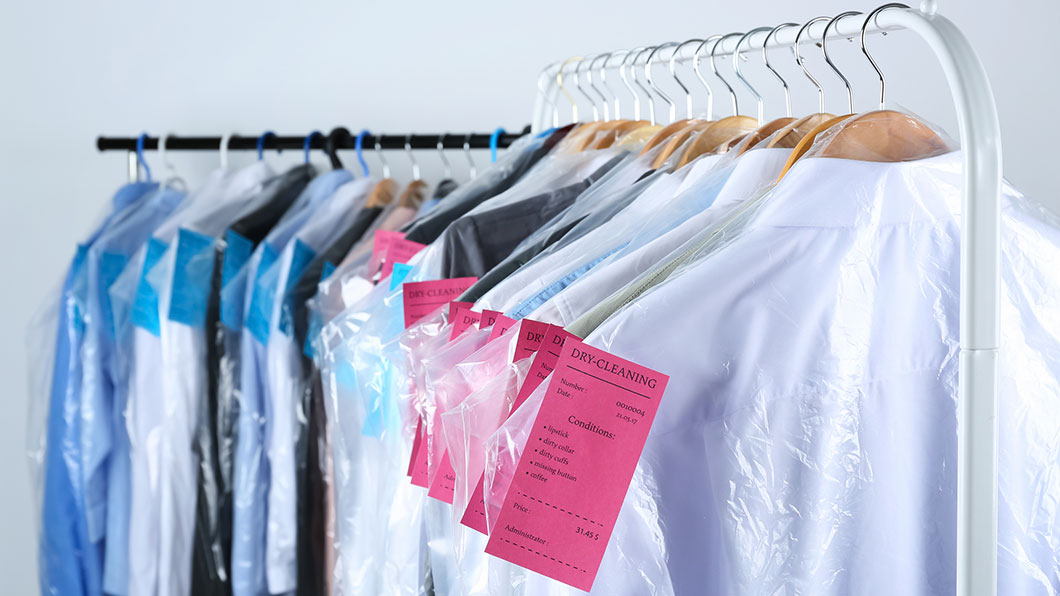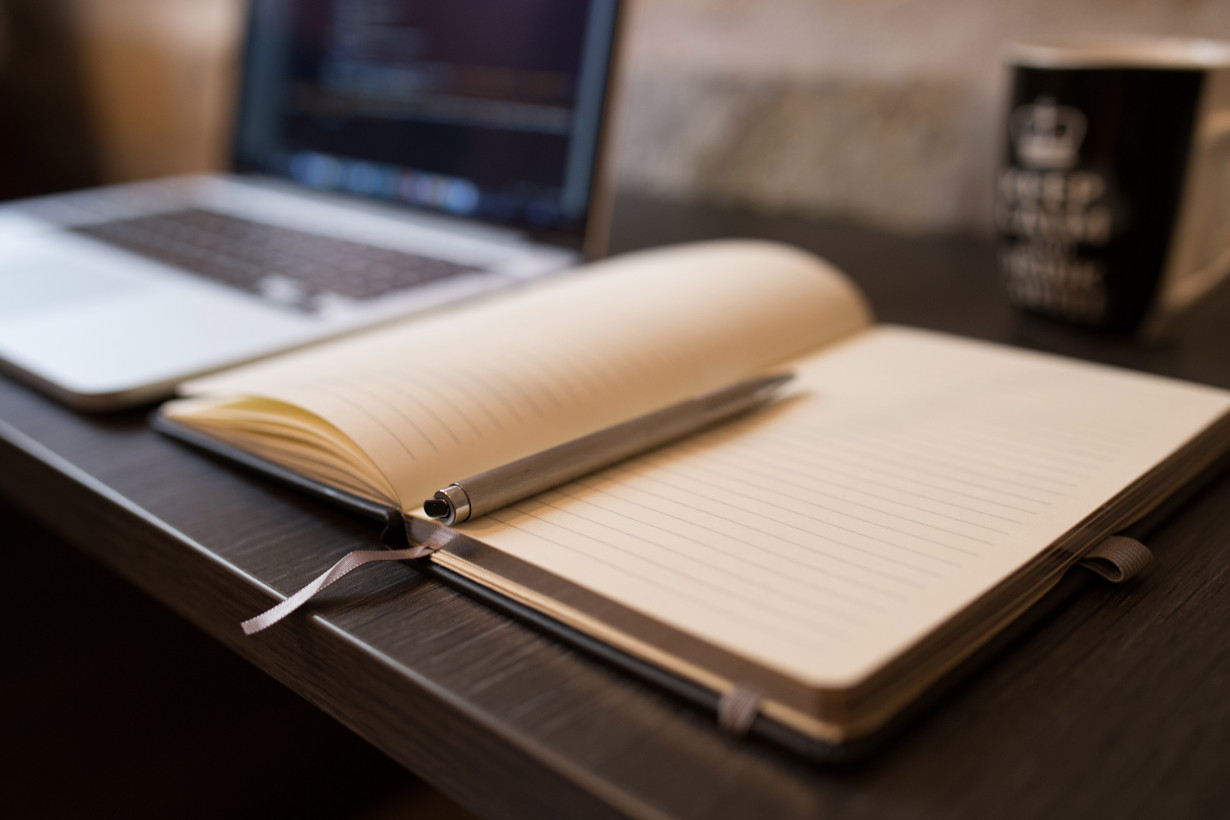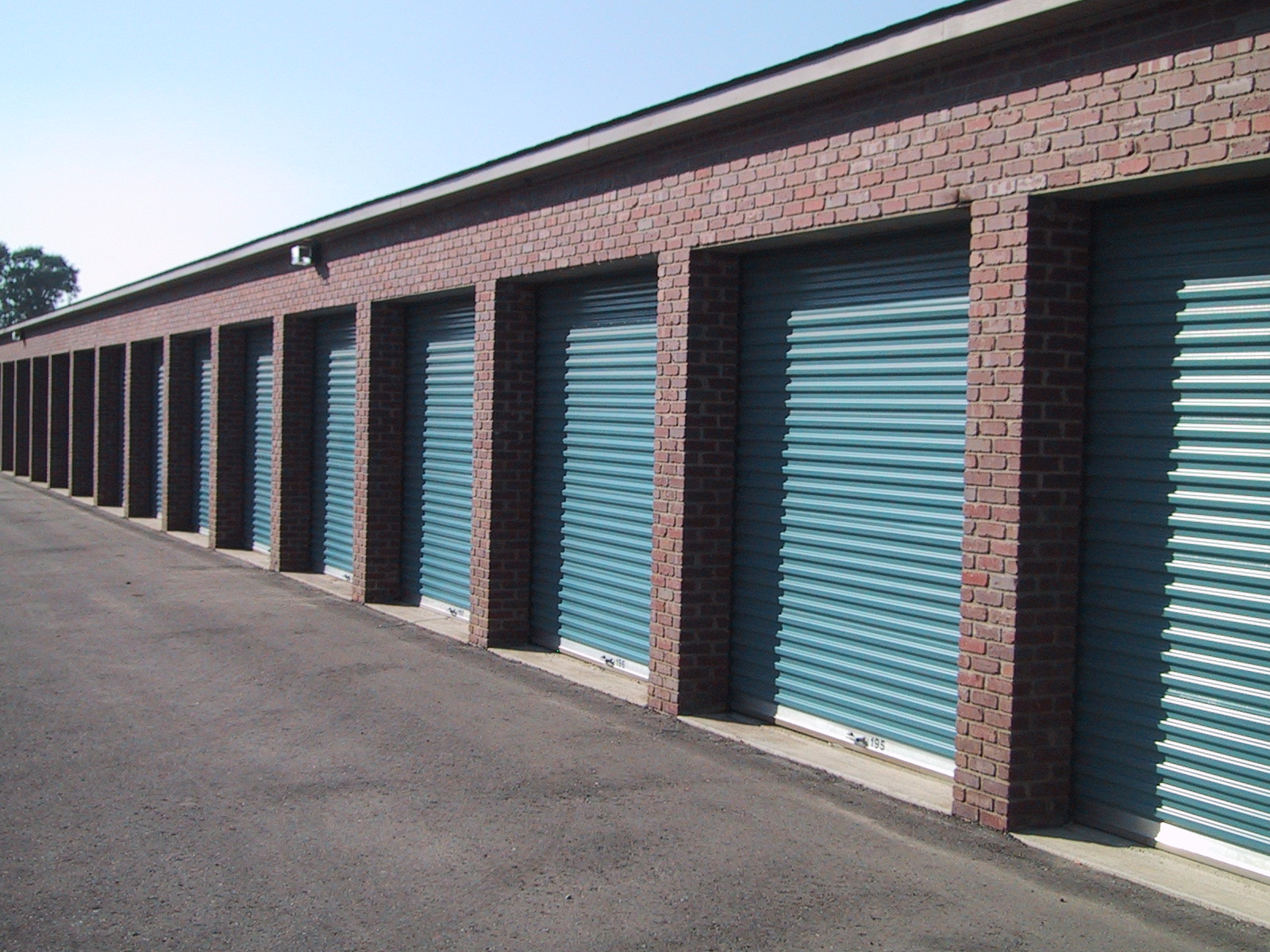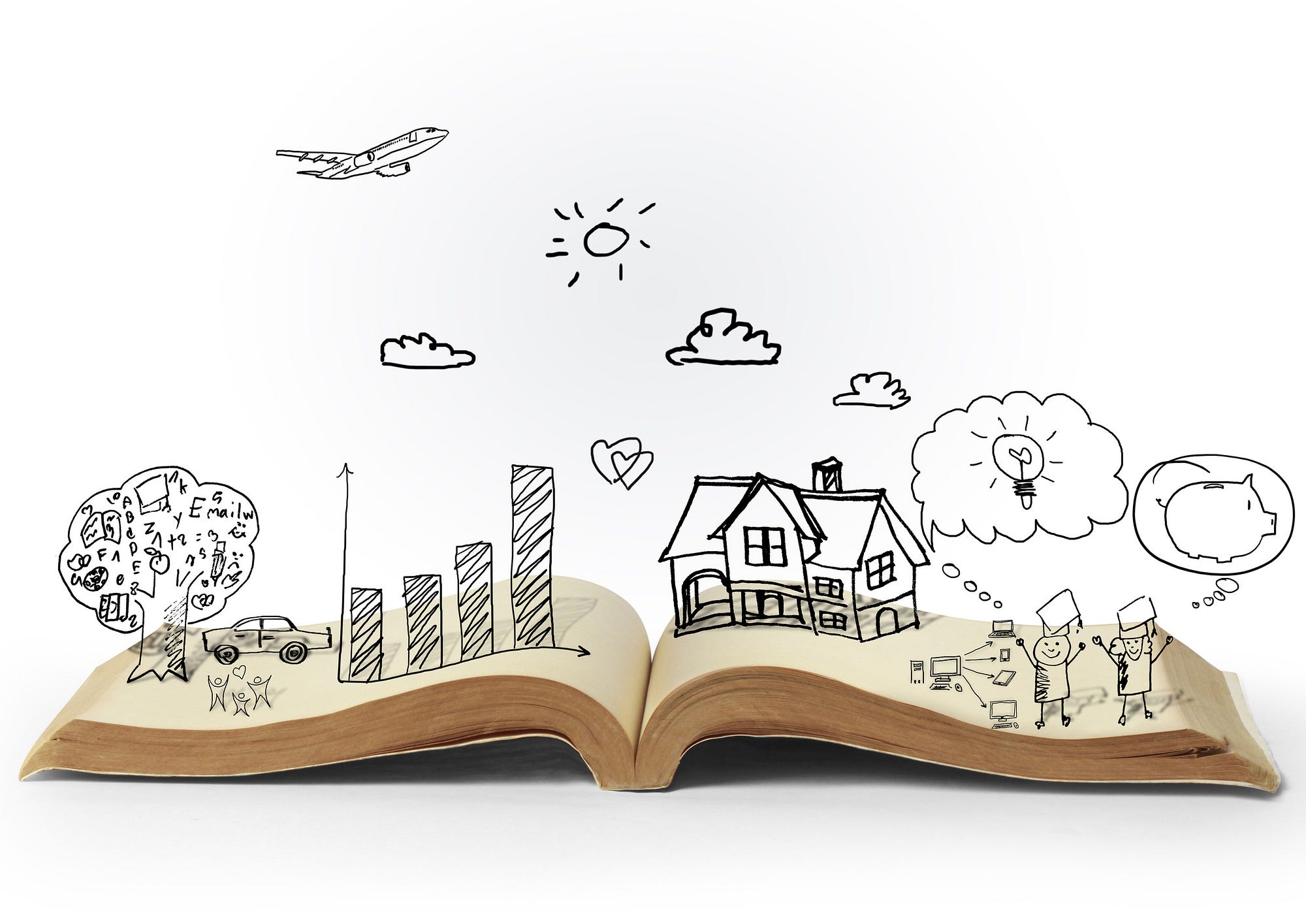In spite of the name, dry cleaning is a process that uses liquids other than water to clean clothes, bedding, upholstery and other kinds of fabrics. Water can harm certain fabrics-- such as wool, leather and silk-- and a washing machine can damage buttons, lace, sequins and other delicate decorations. Go into dry cleaning.
Dry cleaning chemicals
Dry cleaners use a range of solvents to clean fabric. Early solvents consisted of gasoline, kerosene, benzene, turpentine and petroleum, which were very flammable and unsafe, according to the State Union for Remediation of Drycleaners (SCRD), a group whose members share information about clean-up programs. The 1930s saw the advancement of synthetic, nonflammable solvents-- such as perchloroethylene (likewise known as perc or PCE) and decamethylcyclopentasiloxane (also called GreenEarth)-- which are still utilized today.
Cleaning agents are generally added to the solvents to assist in the elimination of soils, according to an SCRD report entitled "Chemicals Used in Drycleaning Operations." Detergents aid dry cleaning in three ways:
Carrying moisture to aid in the removal of water-soluble soils.
Suspending soil after it has been gotten rid of from the fabric so it will not be reabsorbed.
Acting as an identifying agent to permeate the material so that the solvents will have the ability to remove the spots.
Detergents are either added into the solvent prior to laundry service agencies begins or included into the procedure at specific times.
Dry cleaning procedure
Dry cleaning machines include four parts, according to the Drycleaning & Laundry Institute (DLI), a global trade association for garment care professionals:
The holding tank or base tank that holds the solvent.
A pump that circulates the solvent through the machine.
Filters that trap strong impurities and soils removed from either the solvent or the fabric.
A cylinder or wheel where the products that are being cleaned are placed.
Throughout dry cleaning, the pump pulls solvent from the tank and sends it through the filters to remove any pollutants. The filtered solvent then goes into the cylinder, where it communicates with the materials and removes any soil. The solvent then travels back into the holding tank so it can begin the procedure once again.
After the items finish the cleaning cycle, the machine goes through an extraction cycle, which gets rid of excess solvent. During this process, the rotation rate of the cylinder increases, similar to the last spin cycle on a house washing machine.
After the extraction cycle completes and the cylinder stops moving, the clothes are either dried within the exact same machine (if it is a closed system) or moved into a different drier. The excess solvent is collected, filtered and transferred back into the holding tank.
History of dry cleaning
Dry cleaning dates back to ancient times, according to the DLI. Records about techniques for cleaning delicate products have been discovered in the ruins of Pompeii, annihilated by the eruption of Mount Vesuvius in the year 79. In those days, numerous clothing were made from wool, which was understood to shrink in water. Expert clothes cleaners, referred to as fullers, used solvents such as ammonia (produced from urine) and lye, in addition to a kind of clay called fuller's earth, which stood out at taking in dirt, sweat and grease stains.
According to the DLI, the earliest reference to anything resembling modern dry cleaning was a story about an awkward housemaid who spilled some kerosene on an oily tablecloth. The kerosene quickly vaporized, and she saw just how much cleaner the spot where the chemical fell was. People performed numerous experiments after that event to identify what types of solvents were best at cleaning oily discolorations. These compounds included turpentine spirits, kerosene, petroleum-based fluids, gasoline and camphor oil, according to the SCRD.
The credit for being the first industrial dry cleaner goes to the company of Jolly-Belin, which opened in 1825 in Paris, according to the Handbook of Solvents. In Paris, naturally, style was a vital part of society. The clothes were taken in barrels filled with turpentine, then put into a sort of predecessor to the washing machine and then air dried so that the turpentine could vaporize.
The very first dry cleaner in the United States appeared around the very same time. Thomas Jennings, a U.S. tailor and creator, as well as the very first recognized African-American to receive a patent in the United States, utilized a technique called "dry scouring" to clean clothing that conventional cleaning approaches would damage. His procedure was patented in 1821, and Jennings ran an extremely effective tailoring and dry cleaning business in New york city City.
What is dry cleaning?
the process of cleaning a garment with a natural solvent, without using water.
The hidden concern with petroleum-based solvents was their severe flammability, so alternatives were sought. Michael Faraday, an English physicist and chemist, first synthesized PCE in 1821. Nevertheless, it wasn't readily used in dry cleaning till the early 1930s, after William Joseph Stoddard, a U.S. dry cleaner, further industrialized PCE as a dry cleaning solvent. Its usage grew in the late 1930s and early 1940s due to a petroleum scarcity throughout World War II.
Environmental and health concerns
While it is the most popular choice for laundry services, perchloroethylene has actually been found to be harmful for both health and the environment. According to the Occupational Safety & Health Administration (OSHA), coming into contact with perc puts dry cleaning workers at high danger of health complications. Exposure to perc vapors may take place when a worker loads dirty clothes into a machine, gets rid of items before the drying cycle completes, cleans lint or button traps, alters the filters, or performs upkeep on the machines.
Those who have their clothes and uniforms dry cleaned up regularly may likewise experience the negative effects of perc. Breathing in these vapors for an extended duration can cause dizziness, drowsiness, loss of coordination, mild amnesia, visual perception and blistering of the skin after extended contact.
Individuals in the dry cleaning service likewise deal with a danger of certain types of cancer. Long-term exposure, according to the National Library of Medicine, might cause specific kinds of cancer, including esophageal, cervical, bladder, numerous myeloma and non-Hodgkin's lymphoma. There are likewise potential links to cervical and breast cancers.
Damage to the central nervous system, liver, kidneys and lungs might likewise establish.
Research studies, such as one published in 2014 in the journal Environmental Health Perspectives, go over links that have been found in between perc and cancer, particularly in the dry cleaning company. After going over lots of similar previous studies, and after studying the results of perc on rats, the researchers in the 2014 study concluded that perc exposure did have a strong correlation with specific types of cancer. Similar to the EPA's 2012 category, the 2014 study defined the substance as "likely to be carcinogenic to people," no matter how someone can be found in contact with the chemical.
Another 2014 study, likewise appearing in Environmental Health Perspectives, specifically analyzed the threat of bladder cancer in individuals exposed to perc. The researchers likewise discovered strong correlations between dry cleaners who utilize perc as a solvent and an increased danger of bladder cancer. This applied even after taking into consideration cigarette smoking, another recognized threat factor in the advancement of bladder cancer.
The EPA also mentioned that there is some proof, while inconclusive, that perc affects the reproductive system in both men and women, resulting in transformed sperm structures and decreased fertility. There has likewise been some research study into birth defects caused by perc, but the studies are few and have lots of limitations.
Perc can be released into the air, water and soil in the environment around where it is produced or utilized, including the area dry cleaner. According to the Firm for Harmful Substances and Illness Windows Registry, the majority of the perc in the atmosphere originates from the dry cleaning industry. The substance breaks down extremely slowly in the environment, so it can travel long distances.
Perc can enter the water supply by liquid waste that might be polluted with the solvent. Generally, most of the perc evaporates rapidly from the water, and the leftovers break down slowly in the water. The chemical likewise breaks down slowly in soil, where it focuses after leaking out at waste-disposal websites.
The future of dry cleaning
Today, there are at least 36,000 dry cleaners in the United States alone, according to IBISWorld, a market-research business. Nevertheless, according to numerous sources, consisting of a story published on American Drycleaner, many locations in the United States are losing dry cleaners. The short article suggests that rising leas, casual clothing ending up being the new standard, more-durable fabrics being utilized for clothing and cheap clothing are simply a few of the factors for the shrinking number of dry cleaning stores in the United States.
Another factor is that lots of dry cleaners are small, family-owned services. As the older generation retires, the more youthful generation looks for other kinds of tasks. Environmental concerns are also changing the market. California, for instance, is phasing out using perc in dry cleaning in favor of less-toxic options, including water-based and carbon dioxide cleaning.
The term dry cleaning is a bit of a misnomer. Dry cleaning refers to cleaning clothes and fabrics using a chemical solvent instead of water. The cleaning is done with a liquid however the solvent contains little or no water and does not penetrate the fibers like water performs in a washing machine. This process preserves the preferable qualities of numerous materials. The dry cleaning process is usually used on clothing and fabrics that can not hold up against the rigors of a standard home washer and clothes dryer. It also removes the requirement for more lengthy hand cleaning.
The Business Dry Cleaning Process
The business laundry service agencies procedure starts in your regional dry cleaning shop when you drop off your dirty clothes. Today, most dry cleaners do not have equipment on-site; numerous will transport your laundry to a main cleaning facility. This is more cost-efficient than having machines at every drop-off place. There are numerous steps for each item cleaned up:
Garment Tagging: Every item is tagged with an identification number. Some cleaners utilize paper tags that are stapled or pinned to the garment. Others utilize an iron-on strip with a completely assigned barcode for regular customers. Comparable stained garments from different clients are cleaned together and tagging guarantees that your clothes are gone back to you.
Garment Assessment: Before clothing are cleaned up, they are inspected for products left in pockets, rips, tears, and missing out on buttons. These items are returned to consumers and issues are noted as problems understood prior to cleaning.
Stain Pretreatment: As part of the examination procedure, the cleaner look for stains on the clothes and treats them prior to the solvent cleaning procedure. This is also the time a great cleaner removes or covers delicate buttons and trim to prevent damage.
Machine Dry Cleaning: Soiled clothes are packed into a big drum machine and cleaned with a water-free chemical solvent. The clothing are gently upset in the option which causes soils to loosen. The solvent is then drained and recycled and the clothing are "rinsed" in fresh solvent to flush away any last remains of soil.

Post Distinguishing: The dry cleaning services process works effectively in removing oil-based spots thanks to the chemical solvent. Nevertheless, other kinds of spots are not always removed successfully. So, all garments are post found to search for remaining discolorations. The discolorations are treated with steam, water, or even a vacuum to remove any staying traces.
Completing: The final action consists of getting the garment ready to wear. This consists of steaming or pressing out wrinkles, reattaching buttons, or making repair work. Items are then hung or folded to return to the consumer. The plastic bags supplied are just there to help you get your clothing home without more stains. It is essential to take them off right now or risk damage to your clothes from trapped moisture.
History of Commercial Dry Cleaning Chemicals
Dry cleaning has actually been around given that Roman times when ammonia was utilized to clean woolen togas to prevent any diminishing that happens when wool is exposed to hot water. Next, cleaners transferred to petroleum-based solvents like gas and kerosene which showed to be extremely flammable and unsafe to utilize.
By the 1930s cleaners began using perchloroethylene or tetrachloroethylene, a chlorinated solvent. They are highly effective cleaners and are still used by lots of industrial cleaners today. Both have a distinctive chemical smell. Perchloroethylene is referred to as perc and is classified as carcinogenic to people. In the 1990s the United States Epa started to control dry cleaning chemicals and encourage commercial cleaners to use safer, more environmentally friendly solvents.
Green dry cleaning is based on a carbon dioxide cleaning agent system and cleaning machines that apply pressure to draw liquid carbon dioxide through fabrics to eliminate soil. There is no heat included which also makes the procedure more mild to fabrics.
Has the laundry services procedure always appeared a bit mysterious? You drop off filthy clothing and return to discover your most prized pieces looking as good as brand-new-- however what actually goes on in that wonderful location to prepare your closet for the coming week? Most of us don't consider how our clothes get cleaned up, however understanding the difference in between dry cleaning and conventional laundry can assist us better comprehend why specific products need various levels of care.
For how long does dry cleaning take?
If the shirts are laundered on properties, they can be carried out in 90 minutes, start to complete. If they are sent out to an off-premise shirt laundry (not all dry cleaners do work in-house) it could take 24 to 2 days. NO dry cleaner needs to every charge you more for rush service.
Our guide breaks down what's associated with the dry cleaning process so you can be ensured that your clothing benefit from expert attention.
Traditional laundry counts on water and detergent to clean clothes. Dry cleaning, on the other hand, is the market requirement of clothing care without making use of water. This specialized procedure utilizes chemical solvents to gently and effectively clean fabrics, such as silk, that can't be wet washed. Dry cleaning can likewise maintain the original texture, shape and color of garments, which might otherwise get damaged when tossed in the cleaning machine or hung to dry in the sun. After clothes are cleaned up, they may go through a post-spotting stage to eliminate any staying residue.
For insider ideas on choosing the right professional cleaner, consult our guide on what to search for in a laundry and dry cleaning service.
Dry cleaning can take on persistent stains that can't be gotten rid of with water
Consider dry cleaning as laundry with advantages. A vital distinction between the two cleaning techniques is a multi-step procedure called "pre-spotting"-- an expert cleaner might apply a vacuum, steam and heat to prepare discolorations for cleaning. Not all discolorations are equivalent, so it is very important that garments are pre-treated according to the type of stain and material to prevent more damage to the clothes. If heavy stains like mud or grease aren't correctly treated with a stain cleaner before coming into contact with water, the traditional laundering process might accidentally set the stain, making it harder to remove. As a result, dry cleaning can be an alternative care alternative for those hard-to-remove stains or inconvenient blemishes on your preferred pieces.
Dry cleaning is suited for delicate fibers while wet wash methods work for durable materials
As a principle, delicate materials like silk and wool are best looked after by dry cleaning. These fragile fibers can shrink or lose their shape when they can be found in contact with water. On the other hand, long lasting materials like cotton and polyester can be cleaned through standard laundering approaches without risking any modifications.
It's important to note that there are exceptions to the guideline. For instance, cashmere can be either dry cleaned or hand washed with a mild laundry soap. See our guide on which pieces can be dry cleaned up for more information.

Both dry cleaning and conventional laundry have their advantages. Comprehending the differences between the two clothes care choices can assist you decide which of your clothes require an expert touch.
Drycleaning is very similar to routine house laundering, however a liquid solvent is used to clean your clothes instead of water and cleaning agent. The solvent contains little or no water, hence the term "dry cleaning".
Drycleaners utilize very large and technically advanced computer-controlled dry cleaning machines. Your clothing do get wet, but the liquid solvent utilized vaporizes far more rapidly than water. Since solvent is utilized instead of water, it is not drained pipes and disposed of as a cleaning machine makes with stained water. The solvent is re-circulated through filters throughout the entire cleaning cycle to eliminate pollutants loosened throughout the cleaning process. Then the solvent is distilled to be clear and completely purifed before it is used once again.
Drycleaning has two unique advantages over cleaning with water or "damp" cleaning: Water swells the fibres. It is this swelling action which triggers shrinking and color fading in numerous garments. Drycleaning solvents are a lot more superior to water in the elimination of oily or greasy residues which are the base component of many spots.
After your clothes have actually been properly cleaned up, your cleaner "surfaces" (presses) your garments using specialized ending up devices.
Ending up processes used vary, depending on the garments being processed, but usually involve steaming and pushing.
Steaming is effective for unwinding wrinkles, enhancing pushing, and likewise serves to improve cleaning by removing any staying water-soluble products and killing bacteria.
Pressing is the last step and produces crisp, smooth outcomes challenging to duplicate at home with a hand iron. This needs significant ability and training and permits a last assessment of the garment. After your garments have been pushed, they are inspected one last time and packaged to await your arrival.
What does dry cleaning in fact do?
Dry cleaning is any cleaning process for clothing and fabrics using a chemical solvent besides water. It is used to clean fabrics that degrade in water, and delicate materials that can not withstand the rough and tumble of a cleaning machine and clothing dryer.What does dry cleaning in fact do?
Four major factors figure out whether a garment is cleaned in water or solvent:
The kinds of soil present
The fiber structure and garment building
The dye present in the material
The nature of the numerous trims, linings, or other findings that might be utilized in the garment.
Many aspects figure out whether a dry cleaning or a damp cleaning procedure works with a specific garment or textile short article. Your expert cleaner, for that reason, should utilize his/her professional judgment to figure out which procedure will finest restore the garment to a like "new" condition.
When you take your garments to the drycleaner please:
Tell them of any spots that are on the garment & any actions you might have taken to eliminate the spots.
Tell them about any special issues you may have about buttons, broken zippers, tears, and so on
. Explain any problems of wear and tear you have about the garment.
This info is a terrific help in assisting the drycleaner to look after your garments.
The Drycleaning Process!
Action 1: Identification and Examination
When you leave garments for cleaning they are inspected and identified with a tag which sticks with the garment till it is returned to you.
Step 2: Finding and stain elimination
Your experienced drycleaner masterfully removes spots and spots in conjunction with a number of specialized solutions.
Step 3: Sorting
Garments are sorted for cleaning by category and colour with consideration being given to the manufacturers suggested care label instructions.
Step 4: Drycleaning
Garments are then drycleaned utilizing a special worldwide standard clear solution which removes dirt and grease securely from the most delicate and sensitive fabrics.
Step 5: Drying
Garments are dried using temperature levels appropriate to the kind of garment and in conjunction with any suggestion from the producer's care label directions.
Step 6: Pressing and Completing
Garments are pushed to provide those crisp clear pleats and creases that represent a drycleaned garment. Garments are steam formed to restore body and shape and remove wrinkles.
Step 7: Last evaluation and packaging
Garments are given a final inspection and gotten ready for collection.












